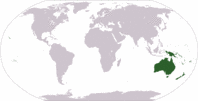Balaka insularis
| Balaka (bah-LAHK-ah) insularis (een-soo-LAHR-ees) | |||||||
|---|---|---|---|---|---|---|---|
 Balaka insularis in cultivation at Fairchild Tropical Botanic Garden. Photo by Carl E. Lewis. | |||||||
| Scientific Classification | |||||||
| |||||||
| Synonyms | |||||||
|
| |||||||
| Native Continent | |||||||
|
| |||||||
| Morphology | |||||||
| |||||||
| Culture | |||||||
|
| |||||||
| Survivability index | |||||||
|
| |||||||
| Common names | |||||||
|
| |||||||
Contents
Habitat and Distribution
Samoa. Balaka insularis Rech. is endemic to Samoa (formerly Western Samoa), an archipelago in the South Pacific.Description
Balaka insularis is a solitary stemmed palm, 10–12 m tall. The stem diameter is 5–12 cm at breast height. The pinnate leaves form a conspicuous crownshaft, and the leaflets, borne in one plane, have praemorse tips (appearing chewed off). The inflorescences are borne below the crownshaft and have a prophyll and a single peduncular bract. The flowers are unisexual, borne in triads of two males flanking the a single female flower. The staminate (male) flowers have bullet-shaped buds and bear many stamens and a slender, bottle-shaped pistillode. The fruits are fleshy, red at maturity (and finely rugose when dry), and about 15 mm long. The endocarp has a few conspicuous flattened fibers adhering to its outer surface. The seed is terete in cross-section; the endosperm is homogeneous. (Dr. Scott Zona, FTBG)
Culture
Cold Hardiness Zone: 10b
Comments and Curiosities
Threats to Survival: There are several possible threats to the survival of Balaka insularis, included climate change, introduced exotic plants and animals, and loss of habitat. The wet forests to which this species is confined may experience less rainfall if global climate changes continues. Habitat disturbance through natural events (cyclones, landslides) or human activities (timber cutting) could extirpate small populations. Samoa has one of the highest rates of deforestation (3% per annum, as of the late 1990s); however, most deforestation has occurred in the lowland forests, where Balaka is not present. Nevertheless, as lowland forest are depleted, logging may encroach on montane and cloud forests. (Dr. Scott Zona, FTBG)
During a visit to Samoa in 2005, Donald R. Hodel (pers. com.) reported that the leaves of the individuals he saw were disfigured and damaged by herbivores. It is not known if the herbivore is native or exotic. (Dr. Scott Zona, FTBG)
Current Conservation Measures: The Samoan government has established a Biodiversity Conservation Unit and has integrated conservation considerations in its national policies. A national biodiversity policy has been drafted. The Forestry Division of the Ministry of Agriculture, Forests, Fisheries and Meteorology restricts logging on steep slopes and areas of ecological importance; however, montane and cloud forests have not been fully surveyed for biological or ecological significance. (Dr. Scott Zona, FTBG)
The traditional system of land tenure in Samoa (customary resource ownership) offers some protection, as 80% of the land is held by customary ownership. There are several community-based forest reserves, including the Falealupo and Tafua Rainforest Preserves on Savai’i, although it is not known if any of these reserves harbor Balaka insularis. No conservation projects are in place to address specifically the conservation needs of Balaka insularis. The palm has not be successfully brought into cultivation, so ex situ collections have not be established. (Dr. Scott Zona, FTBG)
Additional Necessary Conservation Actions: At this stage, the most important step to be taken is to assess the conservation status of Balaka insularis, as even this most basic knowledge is lacking. Pending the outcome of the assessment, additional measures may be indicated, such as establishing ex situ conservation collections in suitable areas within and outside Samoa. Monitoring existing populations and determining the protection status of existing populations are necessary activities. (Dr. Scott Zona, FTBG)
- IMAGE GALLERY
External Links
References
Phonetic spelling of Latin names by edric.
Special thanks to Geoff Stein, (Palmbob) for his hundreds of photos.
Special thanks to Palmweb.org, Dr. John Dransfield, Dr. Bill Baker & team, for their volumes of information and photos.
Glossary of Palm Terms; Based on the glossary in Dransfield, J., N.W. Uhl, C.B. Asmussen-Lange, W.J. Baker, M.M. Harley & C.E. Lewis. 2008. Genera Palmarum - Evolution and Classification of the Palms. Royal Botanic Gardens, Kew. All images copyright of the artists and photographers (see images for credits).
Dr. SCOTT ZONA, and Dr. WILLIAM J. BAKER
Imo, S.T. & W.J. Cable. 1995. Samoa: Country report to the FAO International Technical Conference on Plant Genetic Resources (Leipzig, 1996). FAO, Rome.
Government of Samoa. 1998. National Report to the Convention on Biological Diversity. Division of Environment and Conservation, Dept. of Lands, Survey and Environment, Apia, Samoa.
Wistler, W.A. 2002. The Samoan Rainforest: A Guide to the Vegetation of the Samoan Archipelago. Isle Botanica, Honolulu/
Many Special Thanks to Ed Vaile for his long hours of tireless editing and numerous contributions.
















